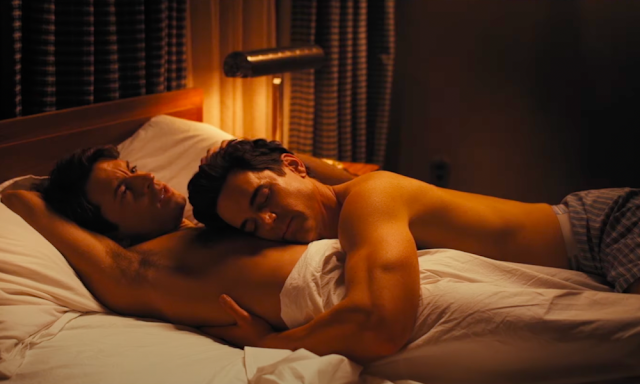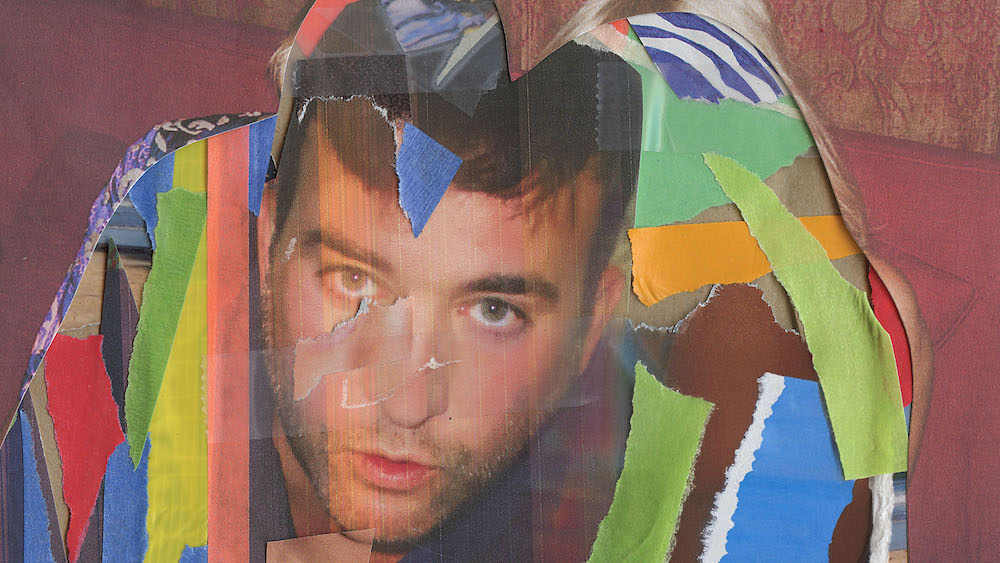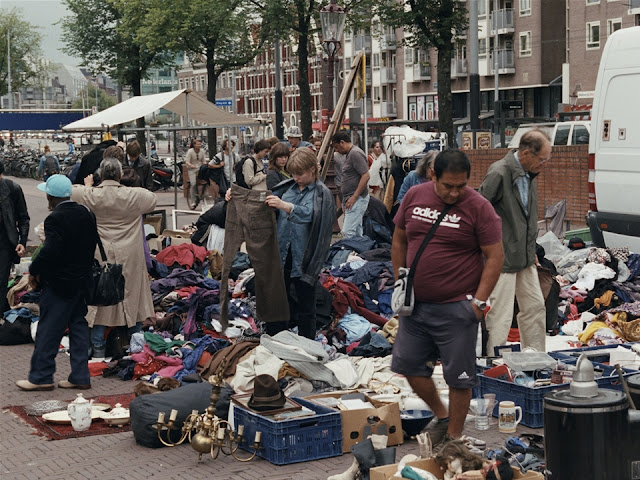Newly-minted billionaire Taylor Swift glides through this concert film with sequins and red lipped cheesin’ at the peak of her pop powers (unless, of course, there are more peaks to come), opening and near-closing with “Mastermind” abilities (the dark edge of her having control over a fawning, smart phone-lit audience is one of the set’s creepy subtexts). The edited version of this pricey concert in L.A.’s towering SoFi stadium (fitting for a student loan debt-ridden nation) went down well with a Diet Coke (whom sponsored Swift in 2013 and whose cans perfectly match her Red era aesthetics) and gnawing dwellings upon chaos and mortality [the weekend’s wake of war (I passed a small protest for ceasefire on drizzly Commercial Street on the way to Provincetown’s Waters Edge Cinema), another horrible mass shooting, Matthew Perry's death—someone from that cheery forever-young cast of Friends suddenly gone].
Swift’s earworms, to some’s great annoyance, have been burrowing away in the background of major shifts in the early 21st century: their uncomplicated chord progressions give comfort; their “Easter egg,” furtive lyrics (all hail concrete details—like a scarf in a drawer) provide a tinge of mystique while initiating one to experience a sliver of celebrity-dom. The tour’s setlist (smartly, each album is contained, but not chronologically drawn upon) conjures up the youthful, sunny feels-like-high-school and “22” optimism of the Obama era in her Fearless and Red tracks, to the forlorn intimacy of COVID lockdowns on folklore (still her most interesting record). The “roaring 20s” from that wistful album’s opener “the 1,” probably refers to age, but I can only think of its latent irony in how the beginning of this decade started out with such global uncertainty and tragedy. It’s performed by Swift in a creamy, crepey dress with gold glints (designed by Alberta Ferretti). This quiet enclave of the setlist features some of Swift’s dreamiest, intricate lyrics and storytelling (under all the pop domination hullabaloo, she’s sometimes under-appreciated as a gifted lyricist; one wishes her songs were covered more by other artists--I would love to hear Stevie Nicks cover "willow," who Swift evokes in her Bella Donna-esque caped performance of it here). The narrative tale, “the last american dynasty,” is thankfully captured here too—a breezy and weird song about an oil money wife having a “marvelous time ruining everything.”
The lyrics “charming, if a little gauche” could apply to this concert film as well—with its corny designer studs (especially the snake one during reputation’s corner) and gangly choreography. The direction by Sam Wrench, photography by Brett Turnbull are solid, if not particularly distinctive, and the tour itself doesn’t have the flashiest tricks up its sleeves nor compelling pizzazz visuals of other legendary pop acts like Madonna. Here, while floating above "Lavender Haze," she is constantly connecting to fans, with their friendship bracelets and hand-heart symbols, an ecstatic audience who, when Swift isn't center-framed, we briefly see in ecstatic scraps, filled with many who may have moved through the emotional tumult of adolescence with her music. Swift's in-between bits are awkward. Perhaps her gawky lack of charisma when she speaks and dances is part of her relatability—you too can feel like a “monster on a hill,” dancing and loving her music, and she will squintingly smile and love you back.
Swift’s overtures to nature in folklore and evermore (especially when she was hit recently with her private jet controversy) has always seemed as tenuous and performative as a Terrain store, so when she sits down at a monstrous grand piano covered in fake moss, it’s laughable, but she seems to knowingly poke a little fun at it too. Part of the appeal of the Eras Tour is to witness her growths of her skills as a songwriter: from earnest corndog country (“Our Song”) to straight-up anthemic and ebullient (all of the 1989 performances are undeniable) to the unassuming and thorny (there’s a little bit of regression on some of the Midnights tracks—but “Anti-Hero” is smashing and “Karma,” with its ridiculous lyrics and lunging beat still makes me swoon--here, a perfect, uplifting closer).
Is the communal mania of going to this tour, this concert film (and films like Barbie) somehow related to a hungered mixture of our need-to-be-seen-and-shared social media age and our post COVID-vaccination times? Swift was already (and still is right now) dominating the music industry. Just go to your local Target—one of the last mainstream dregs to find physical media of music in a mainstream brick and mortar store—and you may see disheveled shelves of just Taylor Swift albums on vinyl and CD’s (her current ones and re-recordings of her old ones), some with a kaleidoscopic array of appealing album art for each record. With so much "free" music out there, there is a narrowing pool of artists, with the aid of a strong label, and a canny marketing team, who amass tremendous dominance over the industry. But credit should be given sometimes to the artist themselves. Ultimately, any popular icon has detractors, but the skeptic who finds this film on a rainy Sunday in a sparsely-attended theater (sans pre-teens dancing in circles) may be temporarily buoyed by quality music and Swift’s relentless "hope of it all." ***
-Jeffery Berg













